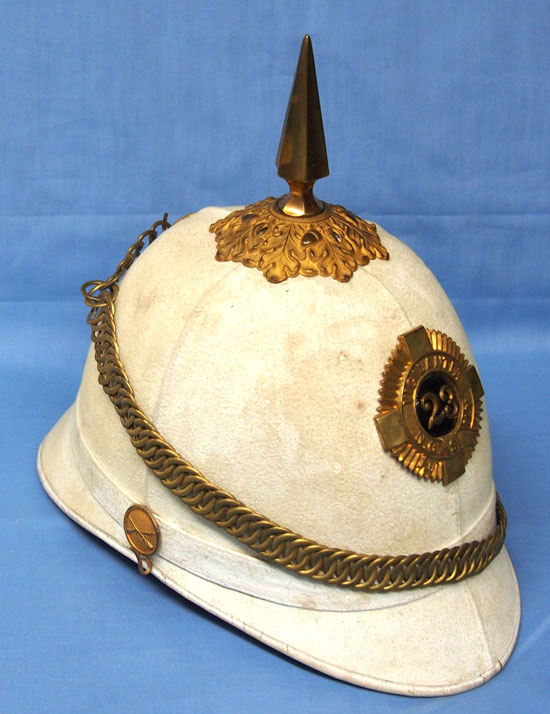
New York fielded a number or National Guard and militia units at the tail end of the 19th century, and many of these units fought with distinction in the American Civil War and then with the regular army during the First and Second World Wars.
One such unit was the New York State National Guard, 23rd Infantry Regiment, which was active from 1863 to 1957. It began as the 23rd New York Volunteer Infantry Regiment before becoming the 106th Infantry Regiment in World War I. As with other National Guard State of New York units, the 23rd Infantry Regiment would have been outfitted in the same basic uniforms and equipment of the regular army. Many of these items were made in New York and New England during the 19th century. Headgear including helmets was a slightly different story.
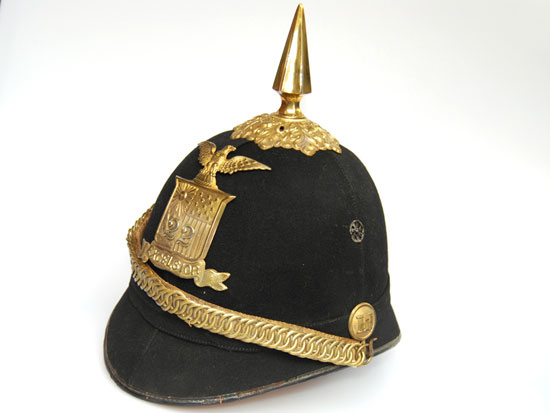
The National Guard State of New York dress helmet – this is the standard NGSNY style helmet, complete with chinchain, side buttons, front plate and spike. (Author’s collection)
While the NGSNY units did wear a felt helmet that was similar in shape and design to the U.S. Army’s dark blue/black dress helmets – sometimes called the “horsehair plume” helmets as these were often adorned with the plumes, but more often just worn with a spike – these units tended not to use the standard Model 1887/1889 summer sun helmets. The U.S. Army adopted four panel helmets made by Horstmann Brothers and Company of Philadelphia, but the NGSNY units adopted helmets made by New York City-based firms including Ridabock & Company/Baker & McKenney.
In fact, it should be noted that the U.S. Army’s dark dress helmets were also made by Horstmann Brothers and Company, while Ridabock & Company/Baker & McKenney actually produced the NGSNY helmets – albeit an extremely close copy. For reasons not fully understood the summer helmets made by Ridabock differed in overall shape – with a much smaller profile.
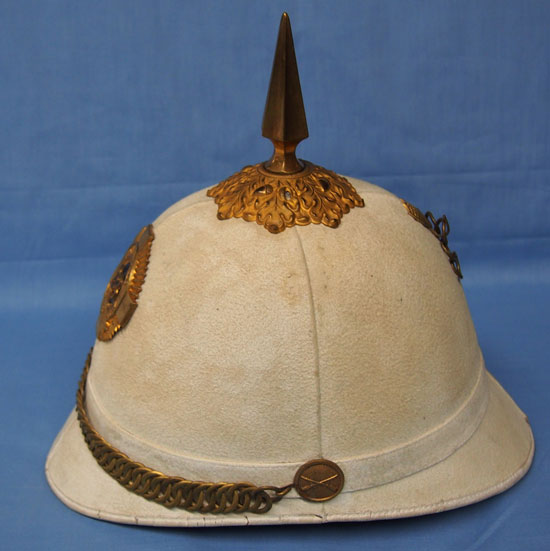
Side views of the NGSNY summer dress helmet. (Author’s collection)
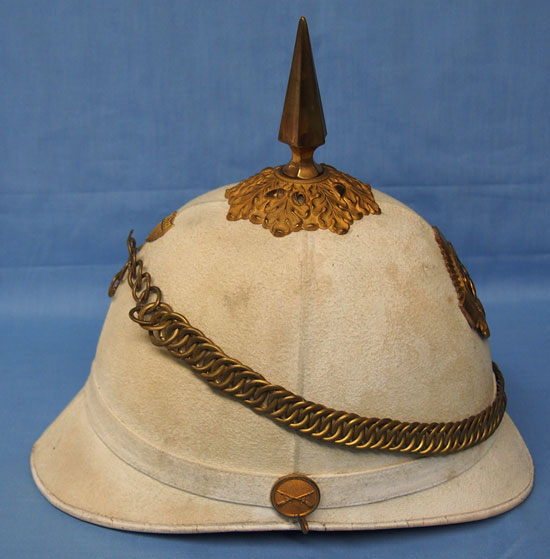
The view from the other side – unfortunately the leather under the chinchain is long gone. (Author’s collection)
One other notable difference is that there seemed to be no real difference between the helmets worn by officers and enlisted men when it came to the U.S. Army. Both officers and enlisted men alike wore the standard four panel Model 1887/1889 helmets – there do appear to be higher quality versions of the earlier Model 1880 helmets however.
By contrast to the U.S. Army the NGSNY officers seemed to have had the option of buying higher quality helmets, as noted by this example, which features a doeskin covering and higher quality leather headband. It also appears that while the U.S. Army regulations stated that spikes and other hardware were not to be worn – a regulation apparently ignored based on photographic evidence and surviving examples – that the National Guard officers may have had the option of wearing spikes, badges and chinchains.
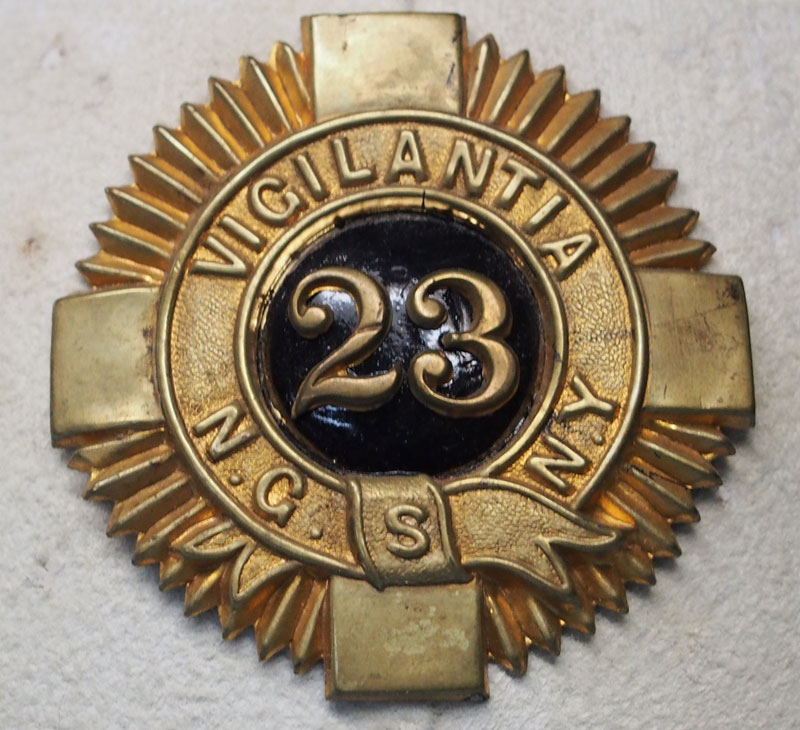
The badge of the NGSNY 23rd Infantry Regiment.
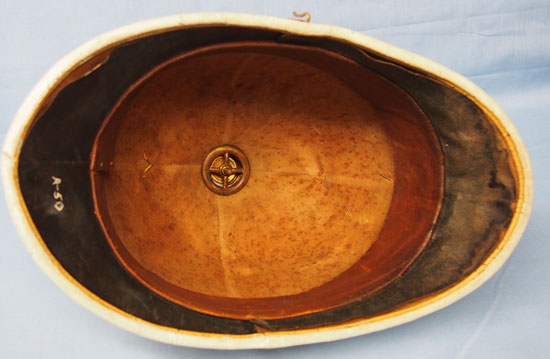
Note the lack of spacers around the headband – the lack of ventilation would have made it hot to wear for extended periods. Note too the number “A-50,” which is likely a museum catalog number.
This example certainly is a quality helmet and it may have been purchased by a man with some means. We will likely never know as there is no name or other information, but we can imagine it would have been the sort of thing Teddy Roosevelt and his New York socialite friends would have sported.
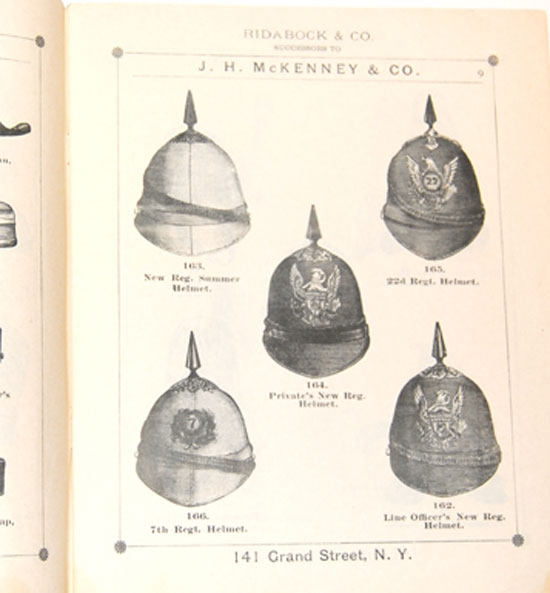
A scan from an original 1880s era Ridabock & Company catalog – it shows that such helmets were private purchase items with plate, spike and chinchain. (Author’s collection)
